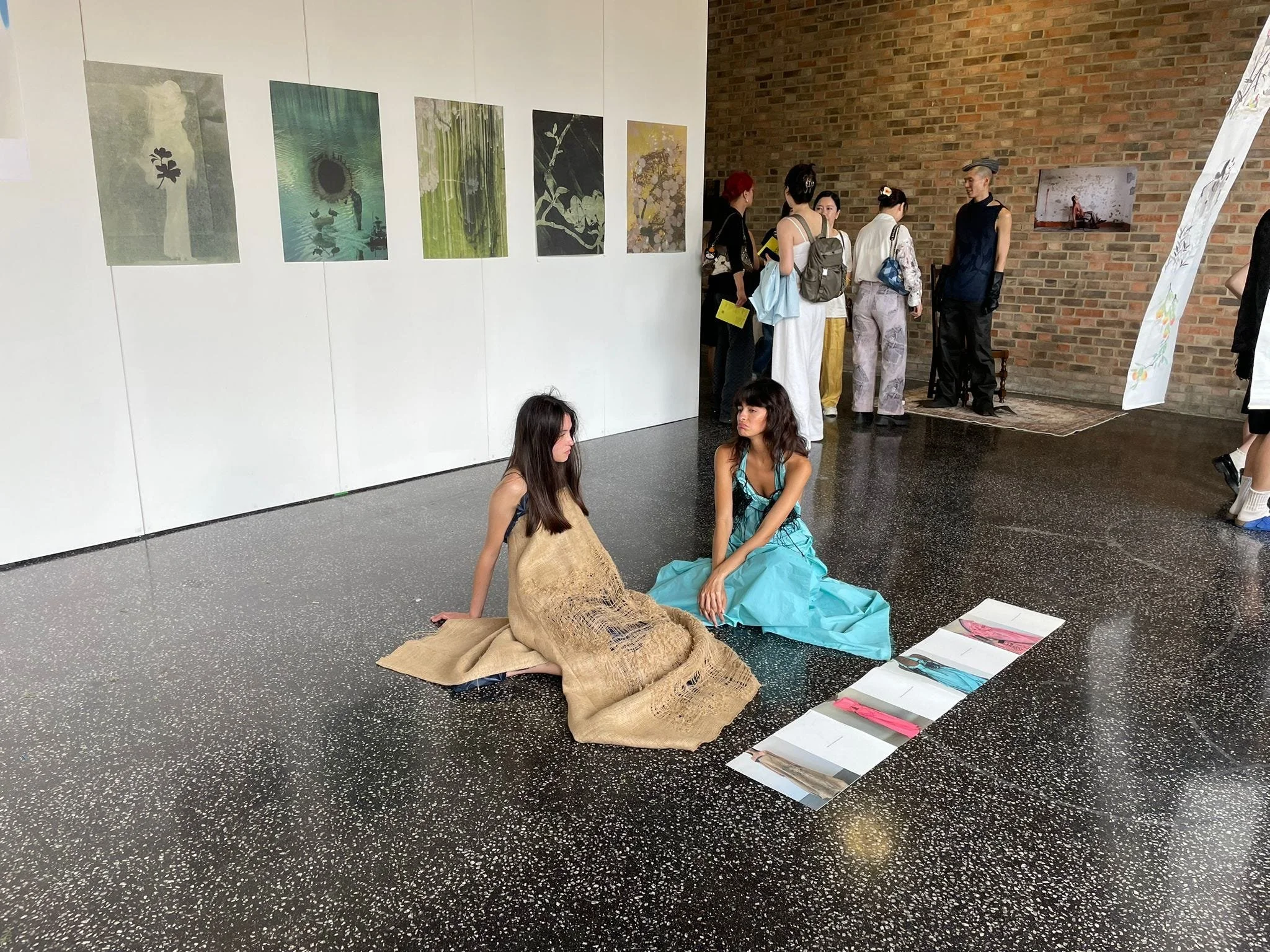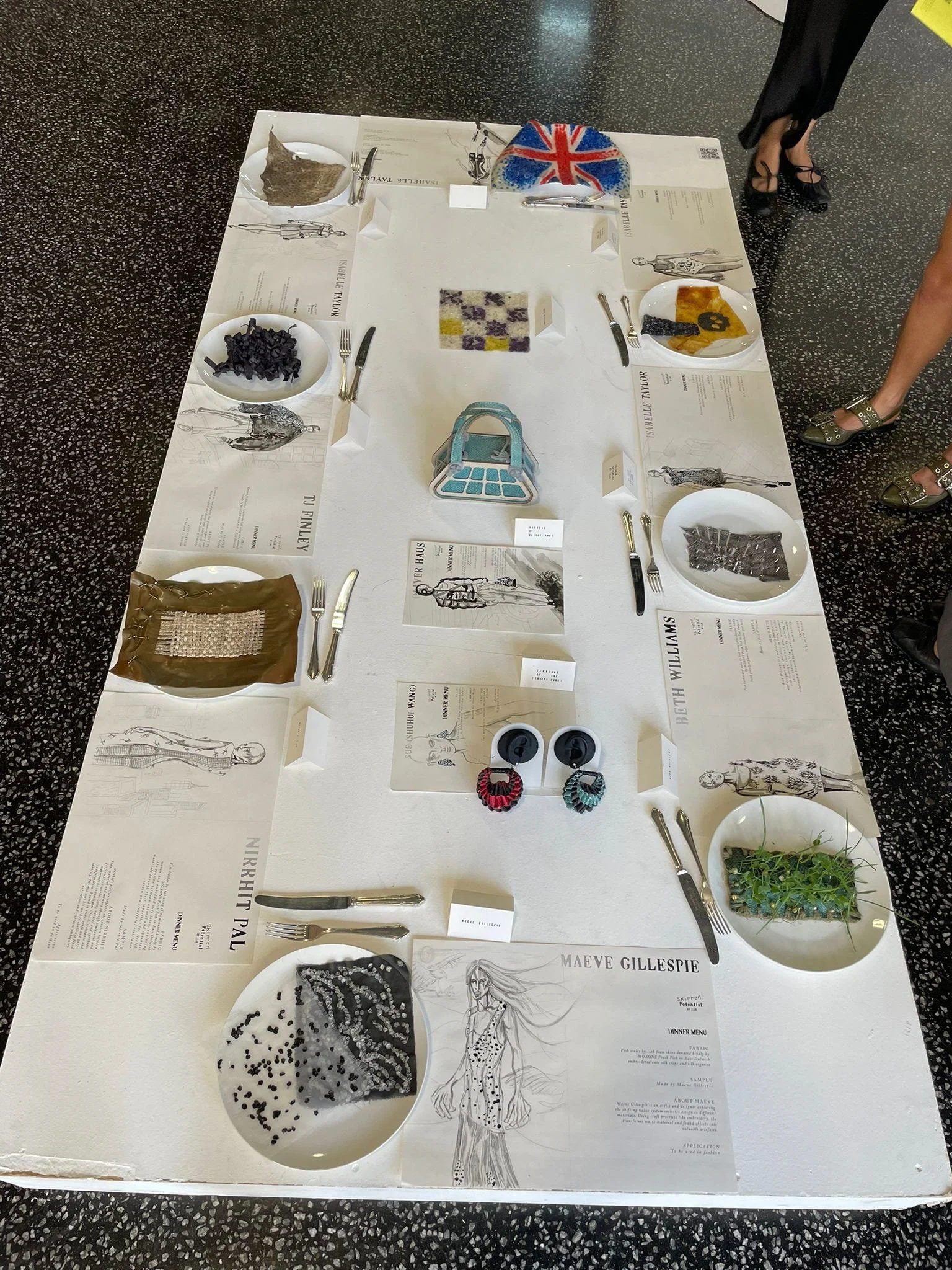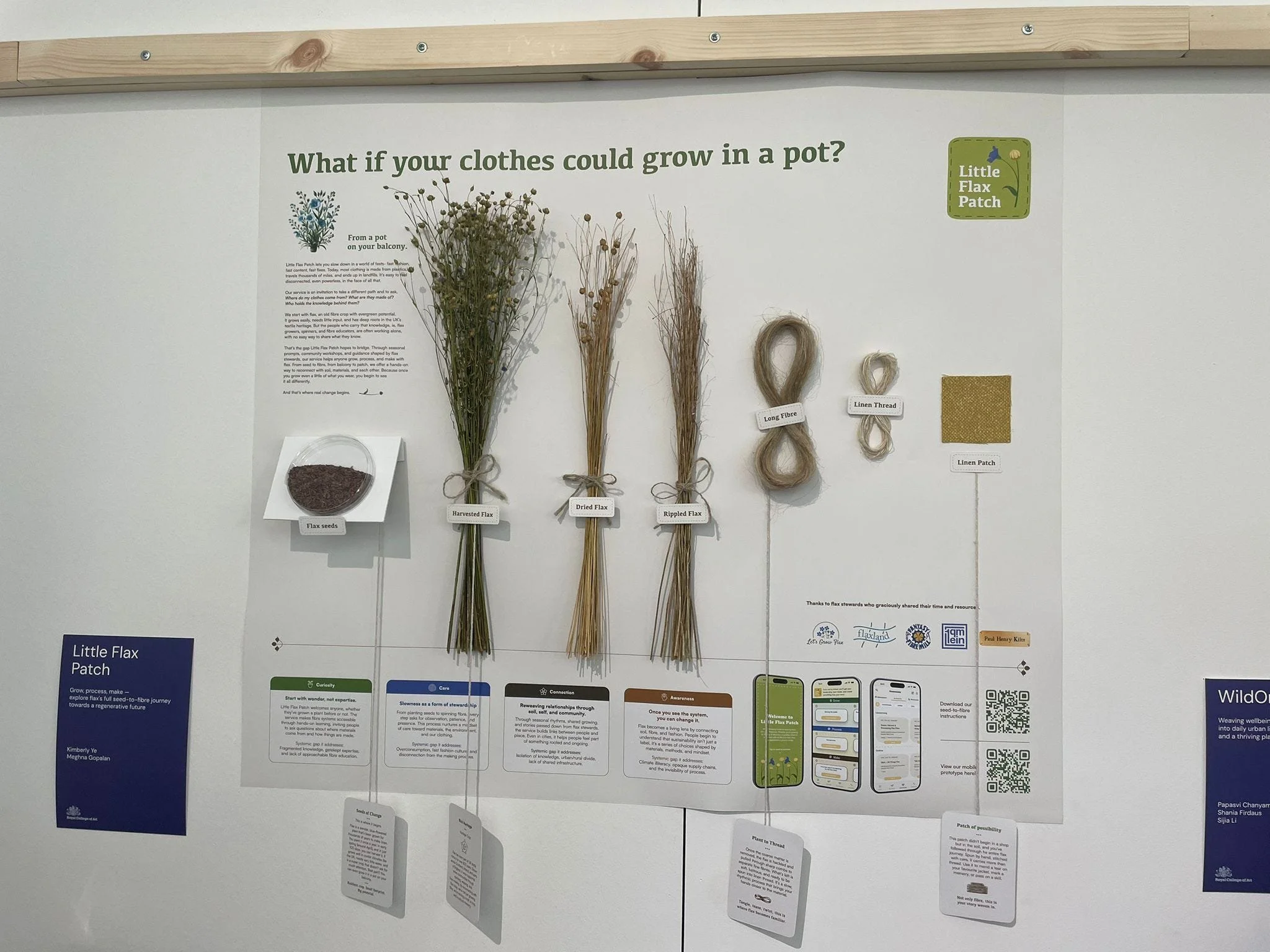The Brilliance of the RCA MA Final Graduate Show and the Architects for Change Podcast, where Jay Morton sits down with Tamara Cincik, our founder and CEO.
MA Fashion Graduate Expo in the Hangar space at RCA Battersea. Image Credit: Harriet Fletcher-Gilhuys
Fashion Roundtable attended the Royal College of Art’s (RCA) final graduate show last week which consisted of Fashion, Textiles, Service Design and Design Futures final showcases. Based at the outstanding RCA Battersea Design and Innovation campus, it encapsulates The Hangar, which is a dynamic brick walled installation and activity space, which opens up to local communities via its walkways.
The RCA encourages MA students to be explorative, creative and forward-thinking, engaging with the wider world outside of the design landscape, engaging with social, political and environmental issues. Students are continually encouraged to ask the ‘vital questions’ and challenge conventional thinking, rather than simply conforming to the norms and expectations of the design industry.
The Head of MA Fashion Design, who is also a Fashion Roundtable Board Member, Zowie Broach, is a visionary who encourages her students to transcend the conventions of a ‘graduate collection’, thinking beyond the realms of what is taught on a conventional fashion degree course. This focus is often on a fast-paced ‘cut and sew’ design framework which feeds societal expectations for fast-fashion pieces and a constant desire for ‘newness’.
The graduate fashion showcase, which removes itself entirely from a conventional fashion runway, focuses on a design expo which allows students to have their work on display in rotation, with a platform to engage with the audience and run Q&A talks to gauge critical feedback.
This type of vital engagement allows students to learn from the public and industry, to really understand how their designs are perceived in the wider world and gives them the opportunity to pull on the storytelling aspect and narrative which aligns so closely with the principles of slow fashion.
The students showcased a wide variety of design applications, from textile pieces to part and finished garments. Isabelle Taylor, who works with discarded fish leather skins which were donated from Moxon’s fishmongers in East Dulwich, displayed her work on a dining room table to get the audience engaged with the relationship from food to fibre, and how garments sit within this as a bi-product.
Isabelle Taylor’s, Fish Leather collection. Image Credit: Harriet Fletcher-Gilhuys
ZhuYi Xu (Hannie) looked at the relationship between fashion and wellness, by displaying a range of garments and products, each with tiny written stories about their journey and how they were made using virgin materials found in the environment. This is to test consumer behaviours and expectations, and to judge levels of emotional responses.
ZhuYi Xu (Hannie), BLUSH collection. Image Credit: Harriet Fletcher-Gilhuys
Mospa Wolff, from MA Textile Design displayed her handwoven British wool tapestry in natural colours. The woven piece, named Falling Circles, used a combination of Herdwick, Cheviot and British Red Fox sheep breeds all working naturally in tandem to tell the story from flock to finish and encourage the use of more British wool in textiles.
Mospa Wolff, Falling Circles. Image Credit: Harriet Fletcher-Gilhuys
This aligns so closely with our project The Great British Wool Revival which encourages more designers and makers to work with British wool, to support local farmers, and pull on the incredible storytelling and provenance aspect that this heritage fibre can provide.
Kimberly Ye and Meghna Gopalan from MA Service Design, explored the concept of growing your own clothes in a pot, by analysing the processing and making flax from full seed-to-fibre. This Little Flax Patch aims to revitalise this old fibre crop, through seasonal prompts and community workshops to create a new way to connect with soil.
Little Flax Patch by Kimberly Ye and Megna Gopalan. Image Credit: Harriet Fletcher-Gilhuys
All of these innovative design methods, using heritage fibres and crops aligns with our recent panel discussion The Great British Wool Revival: from farmer to designer, which was chaired at Groundswell Agriculture by Tamara Cincik, founder and CEO of Fashion Roundtable.
The panel consisted of insights from the GBWR team, the Modern Artisan Collection and The King’s Foundation where the panellists discussed the farmer to designer relationship, the importance of supporting British sheep, farmers and livelihoods and how platforms such as AI can be aligned with the agricultural industry to ensure it thrives. All of the clips are available on the Fashion Roundtable’s YouTube channel.
Groundswell Agriculture Festival brings together like-minded people from farmers, to designers and makers to observe the principles of regenerative agriculture, and what this looks like in practice from farming to both slow-food and fibre production.
It is very exciting to see one of the leading art and design universities in the world, engaging with its students at this level, disrupting industry norms and allowing for regenerative education to be provided at seed level. This in turn, allows for a new generation of designers to enter the industry with the suitable skills and methods needed, to support regional production methods and localised thinking.





